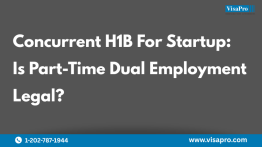Whether you’re in the U.S. on H-1B, F-1, TN, E-1/E-2, or any other nonimmigrant status, staying compliant with immigration rules is essential for maintaining your lawful status and avoiding devastating consequences, including a potential 10-year bar from reentering the U.S.
Unfortunately, many nonimmigrants fall into the trap of misunderstanding expiration dates across multiple immigration documents or fail to track their I-94 records closely enough.
To help you avoid costly mistakes, we’re sharing two of the most common status-related pitfalls nonimmigrants face, and how to stay ahead.
Top 2 Status Pitfalls & How to Avoid Them
1.Common Pitfall: Confusion Around Immigration Document Expiration Dates
Nonimmigrants often juggle multiple documents – visas, I-797s, I-20s, DS-2019s, and each can have a different expiration date. Not knowing which date actually governs your lawful presence can be dangerous.
Failing to follow the correct expiration date can result in loss of status or trigger a 3- or 10-year bar from returning to the U.S.
How to Stay Ahead:
a. Familiarize yourself with your status type and associated immigration documents.
b. Your I-94 arrival/departure record controls how long you may stay in the U.S. – not your visa stamp.
c. For those in work-authorized status (e.g., H-1B, L-1, TN, O-1):
- Always check your I-94 online after every international trip.
- Contact your employer immediately if you believe CBP made an error on your I-94.
d. For those in F-1, M-1, or J-1 status:
- Your I-94 and your I-20 (F or M) or DS-2019 (J-1) jointly determine your authorized stay.
- Stay on top of all listed program end dates.
Example Scenario: An H-1B employee mistakenly relied on the expiration date on their I-797 Approval Notice, thinking they could remain until that date. Unfortunately, their I-94 had expired earlier after they had traveled internationally. They unknowingly overstayed resulting in serious complications when applying for future immigration benefits.
2.Common Pitfall: Visa vs. I-797 vs. I-94 Mismatch
Let’s say you’re in H-1B status with an I-797 approval valid through June 30, 2027. You travel abroad and re-enter the U.S. with an H-1B visa valid until March 30, 2027. However, your passport expires December 30, 2025, so CBP shortens your I-94 to match your passport expiration.
Which date controls your stay? Your I-94! Failure to track it can leave you out of status without realizing it.
How to Stay Ahead:
a. Always confirm your I-94 expiration after international travel EVERY SINGLE TIME – it dictates how long you’re legally allowed to remain in the U.S.
b. While the I-94 generally matches your I-797, CBP may shorten it due to:
- Passport expiration
- CBP making a mistake or
- Other administrative factors.
c. If your I-94 expiration date is earlier than expected:
- Notify your employer and immigration counsel immediately
- Take corrective action, but only after checking with immigration counsel first. Corrective actions include contacting CBP deferred inspection, traveling and re-entering the U.S., filing an extension or amendment.
What Should You Do?
Even seemingly small mistakes, like misunderstanding an I-94 expiration date, can lead to serious immigration violations. It’s critical to review your documents after every trip and have a clear compliance strategy.
At VisaPro, we’ve been helping professionals and employers stay compliant with complex U.S. immigration laws for over 22 years, with a near 100% success rate across all employment-based filings.
📞 Call us at (202) 787-1944 or schedule a compliance check consultation and ensure your status is protected https://www.visapro.com/service-options/consult-attorney/.
Success matters: VisaPro Success Stories
Stay informed – Subscribe to our newsletter for key immigration updates.
Don’t wait until a mistake happens. Stay ahead, stay compliant, and safeguard your future in the U.S.




